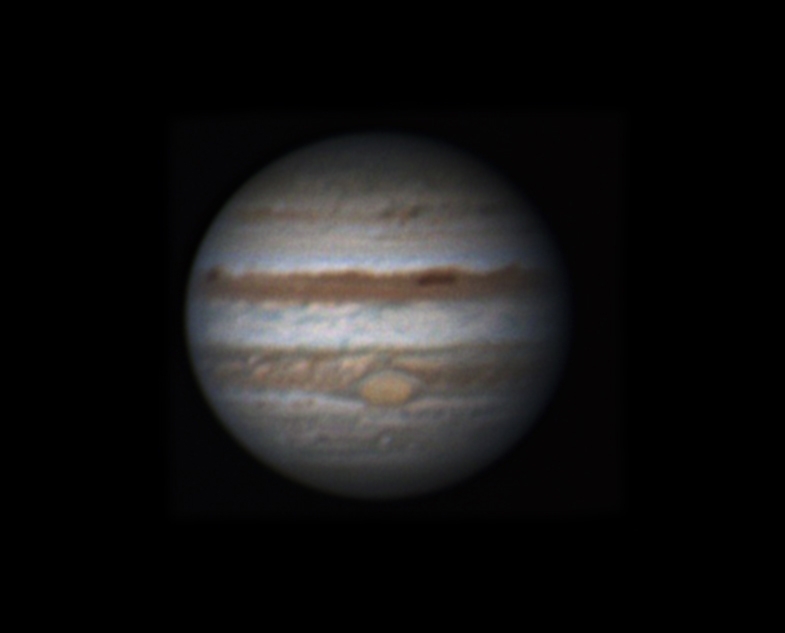I set my alarm at 3am early this morning to capture first light with my new Flea3 camera. Jupiter shined brilliantly in the clear sky and was well placed near the zenith but skittish seeing made focusing extremely difficult. It was never-the-less a joy to see an old friend again and capture my first image of Jupiter since its conjunction with the Sun. The South Equatorial Belt SEB is now very well re-established and busy after fading away completely in 2009. The Great RED Spot swirls as vigorously as ever.
The Flea3 camera is a significant and welcome improvement over my older DBK21 camera. It avails of Sony’s newest ICX618 CCD which is more light sensitive than the older Sony ICX098 and is capable of 120 frames per second versus 30 frames per second with the DBK21. The increased sensitivity also permits lower gain settings that yield smoother images with less noise. A superior global shutter on the Flea3 makes high shutter speeds yield sharper images than cameras using the traditional rolling shutter.
Ultimately though, the final quality of a planet image is dictated most significantly by how steady the atmospheric seeing is during an imaging session. I eagerly look forward to nights of good seeing when I will be able to realize the full potential of the Flea3.


